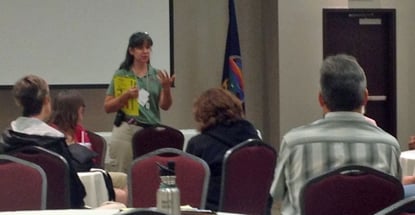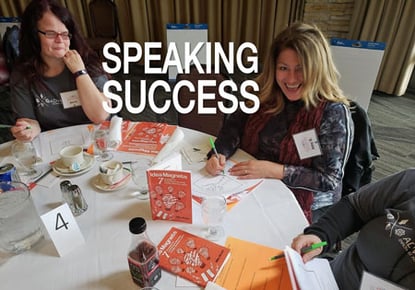 I presented on creating strategic insights from market research at the Frost & Sullivan Marketing World conference with assistance from Jennifer Nelson (Johnson & Johnson), Bill Lenihan (Philips), and Barb Murphy.
I presented on creating strategic insights from market research at the Frost & Sullivan Marketing World conference with assistance from Jennifer Nelson (Johnson & Johnson), Bill Lenihan (Philips), and Barb Murphy.
The interactive Frost & Sullivan conference format called for presenting several strategic case studies. While I don’t usually speak on corporate case studies in presentations, this opportunity along with a pitch Barb was doing recently caused us to discuss - from an audience’s perspective - what a beneficial case study should incorporate:
- A few pieces of general information about the company or market under study – The audience doesn’t need to know everything about the situation; share just enough so we can judge how closely our own situations are to yours.
- A brief problem or opportunity statement – What general strategic situation did the company face? Possible salient points might include the business / market condition (growth, retraction, cost cutting), product lifecycle stage, internal or external audiences, types of customers, business expectations, type of strategy employed, objectives, etc. Again, these needn’t be shared in excruciating detail when all we need is a point of reference to our situations and a sense of the signals that suggested the strategic problem or opportunity was present.
- Three to five generalized lessons learned that it would have been great to know beforehand – Remember this about the audience – we’re “you” before you learned what you learned in this situation. The real benefit for us is to discover what you now know so we can get to the same successes faster or avoid what didn’t work for you. The key question for you to answer: “How would I be able to replicate the steps that took me from the initial strategic situation to success?” That’s what we’re interested in hearing.
- A few critical success factors – The elements essential to repeating a comparable success with our strategy.
- A general indication of results – We don’t need something overly detailed. It’s more important to have a sense of what we can expect, i.e. single or double digit improvements, how soon benefits can be realized, how long they’d last, etc. And avoid all these things – skip “in depth” discussion on your company statistics, videos that don’t move the topic forward, solutions only possible by using you or your vendor, and wasted time extolling your company’s incomparable virtues (i.e., a sales pitch).
I hope the outline is helpful next time you’re asked to prep a case study. And thanks to
Edris Takeda from Steelcase for suggesting this article! –
Mike Brown
If you’d like to add an interactive, educationally-stimulating presentation on strategy, innovation, branding, social media or a variety of other topics to your event, Mike Brown is the answer.
Email us at brainzooming@gmail.com or call 816-509-5320 to learn how Mike can get your audience members Brainzooming!



